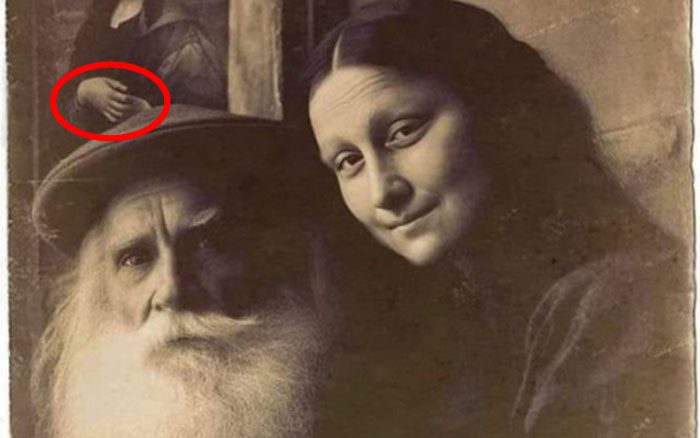The recently shared photo of Leonardo da Vinci and the “Mona Lisa” has stirred up excitement on social media.
Recently, many social media platforms have shared a photo purportedly of the genius Leonardo da Vinci and the Mona Lisa. In the image, both are looking towards the camera and appear quite close. Leonardo da Vinci has a dignified, weathered face with silver hair and beard. He is not smiling, and his eyebrows and forehead seem to be furrowed.

This photo immediately caused a sensation on social media upon sharing.
The Mona Lisa, on the other hand, looks completely at ease in the frame. She even tilts her head gently against Leonardo da Vinci’s hat. Notably, she maintains her signature smile, similar to that in Leonardo da Vinci’s famous painting known as La Gioconda. Behind them is one of the renowned works of this great artist.
As soon as it was shared, this photo went viral on social media. The image purportedly capturing Leonardo da Vinci and the Mona Lisa received tens of thousands of likes and thousands of comments.
However, the photo has also sparked much controversy. Many people argue that if cameras existed at that time, why didn’t Leonardo da Vinci take a photo of the Mona Lisa? Others find the photo intriguing, yet most express skepticism about its authenticity. Even historians and photography experts have joined the debate.
Subsequently, experts provided a surprising clue that unveiled the truth behind the alleged photo of Leonardo da Vinci and the Mona Lisa. Upon zooming in on the image and examining the painting behind the two figures, particularly the hands of the Mona Lisa, we notice that her fingers appear somewhat incorrect.
Moreover, in 1816, Joseph Nicéphore Niépce invented a box camera capable of capturing negative images. Although prior inventors had created several prototypes of modern cameras, producing an image like this would have been extremely challenging.
It wasn’t until 1888 that Eastman Dry Plate and Film released a modern camera on the market. It came pre-loaded with 6cm film that could take 100 photographs. By December 1975, Eastman Kodak unveiled the first digital photograph, utilizing a CCD sensor developed by Fairchild Semiconductor in 1973. This camera weighed 3.6 kg, with a photo exposure time of 23 seconds, capturing black and white images at a resolution of 10,000 pixels, stored on magnetic tape.
Meanwhile, Leonardo da Vinci passed away on May 2, 1519, in France. Thus, we can see that this photo is entirely a product of artificial intelligence (AI). With the advancement of technology today, using AI to create similar images is not difficult at all.
Finally, experts found evidence proving that the photo of Leonardo da Vinci and the Mona Lisa is fake. The truth has been revealed, leaving many people surprised. Nevertheless, most individuals, upon receiving this information, share a common sentiment that sometimes AI can create very interesting things.



















































